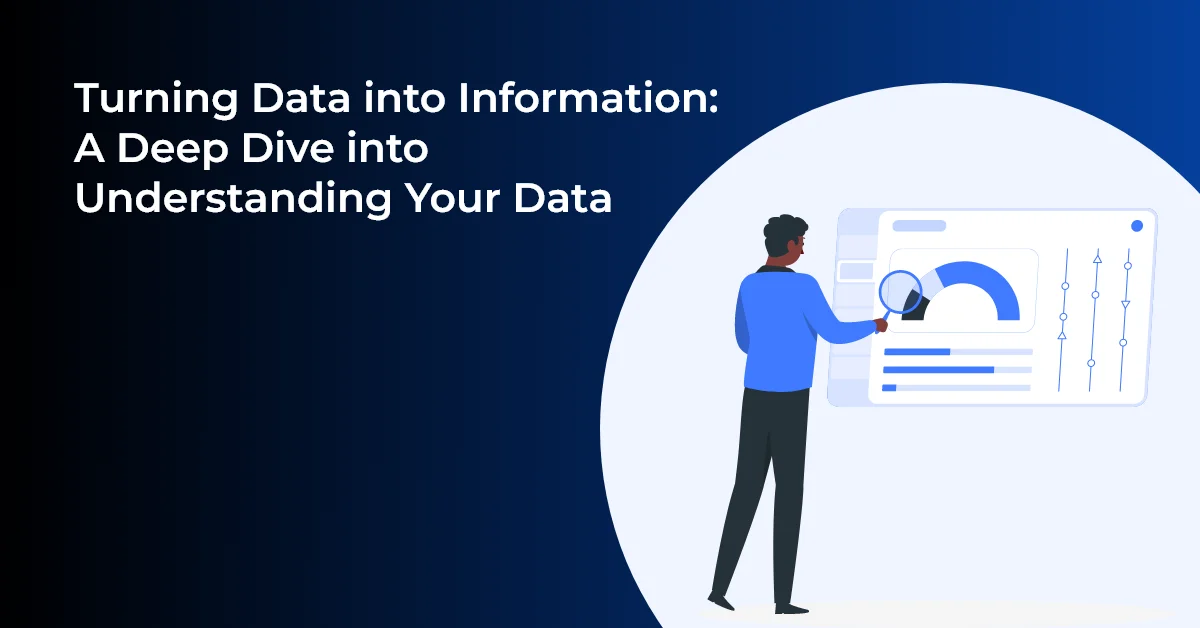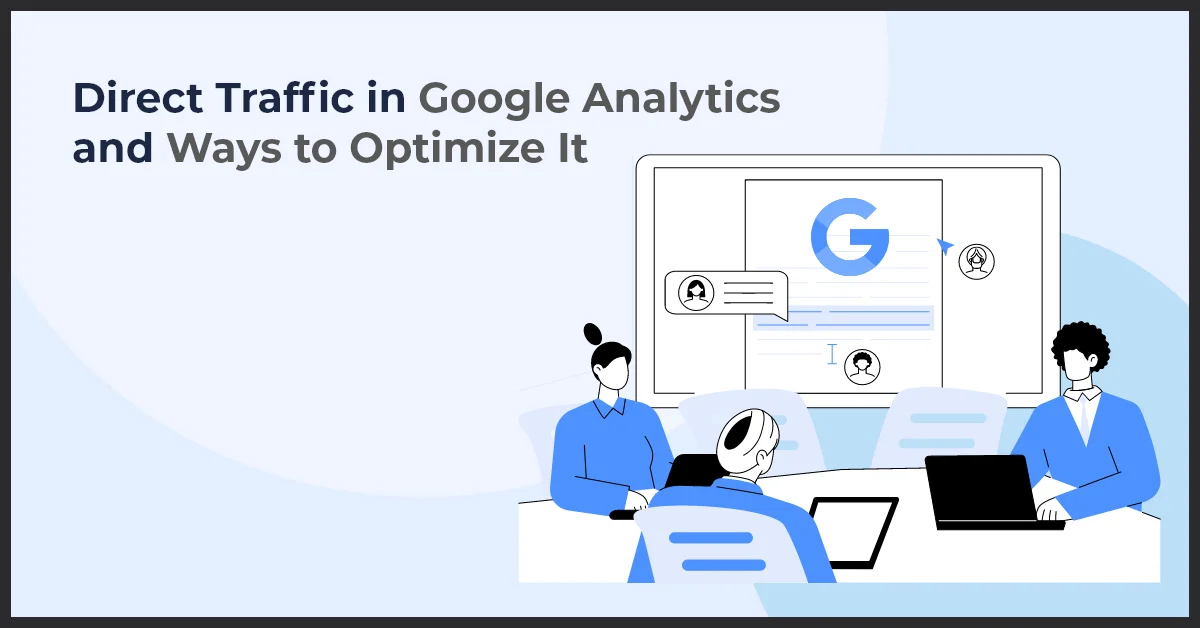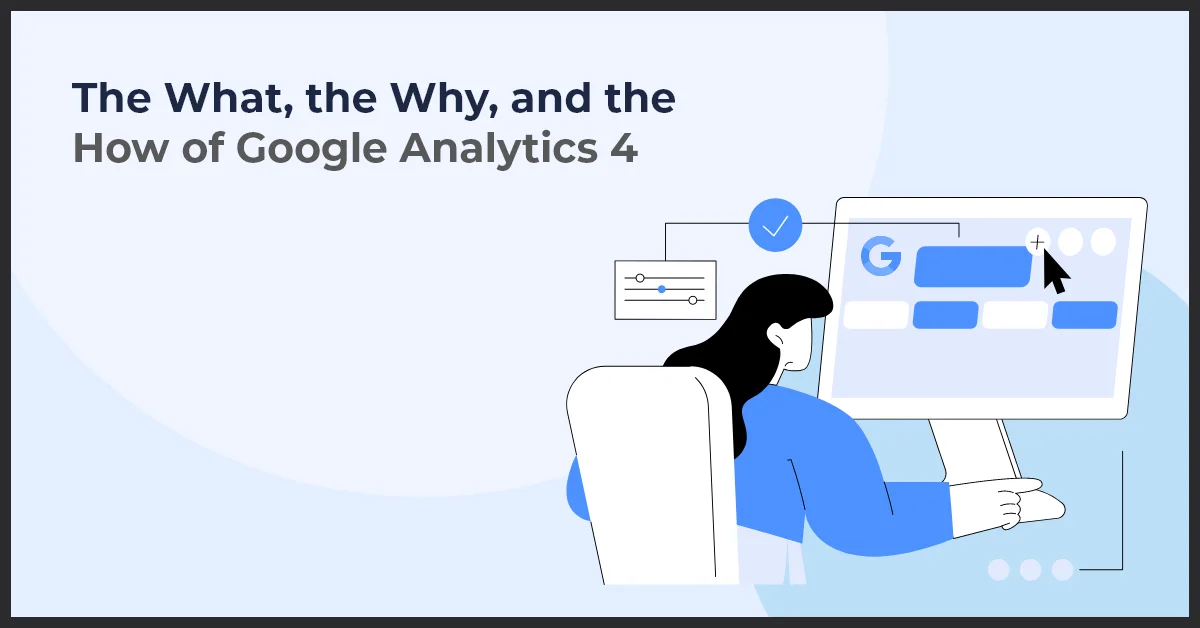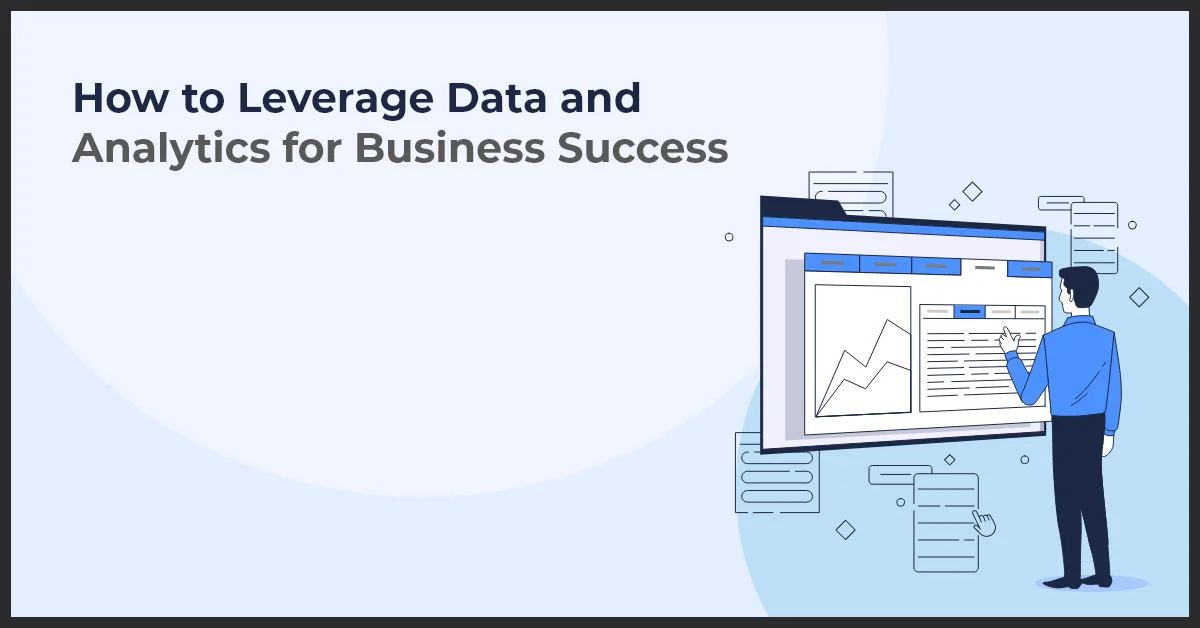Turning Data into Information: A Deep Dive into Understanding Your Data

Published on: April 14, 2023
Updated on: September 26, 2024
8231 Views
- Analytics
18 min read
It will take approximately 16 minutes for you to read this article. By the time you finish reading this write-up – there will be 4.8 million credit card transactions, more than 85000 orders on Amazon, and more than 200 million searches on Google. That's data for you!
Data - is not just a buzzword; it's a driving force that shapes our daily lives in ways we may not even realize. Data affects every aspect of your life, from the products you buy to the services you use. Eric Schmidt, the former CEO of Google, stunned the world back in 2011 by giving a perspective on the use and importance of data.
According to Eric, between the dawn of time and 2003, mankind created 5 exabytes of data. By 2010 we were creating the same amount every two days. Between then and now, the time has shrunk to just 40 mins!
Calling today's world data-driven would be cliche. Everything we do, from buying groceries to paying credit card bills and even enjoying our favorite shows on Netflix, we contribute 2.5 quintillion bytes of data daily. Hence, understanding data is crucial for businesses and individuals alike. It is the most valuable asset for any business, especially in the tech industry. It provides insights into our lives, from customer behavior to intended purchases. However, it can be challenging to make informed decisions without the ability to interpret and analyze data effectively.
Turning Data into Information: Unleashing the Power of Data-driven Decision Making
In the digital age, data fuels every aspect of business operations - from sales and marketing to strategic planning and customer service. But data alone is not enough to drive success. To thrive in today's competitive landscape, businesses must transform raw data into actionable insights, seamlessly transitioning from raw input to meaningful output. This process, known as turning data into information, holds the key to unlocking the power of data-driven decision making.
Defining Data and Information
Data refers to unprocessed facts, statistics, or figures collected from various sources. It can be numbers, text, images, or any other form of input. On the other hand, information is the organized, processed, and meaningful interpretation derived from data. It provides knowledge, context, and understanding, enabling decision-makers to make informed choices and take appropriate actions.
The Data-to-Information Process
The data-to-information process involves transforming raw data into organized, relevant, and insightful information. This process typically includes data collection, extraction, cleaning, analysis, and presentation. By applying various techniques and tools, such as statistical analysis, visualization, and data modeling, businesses can extract valuable patterns, trends, and correlations from data sets, leading to actionable insights.
The Significance of Data-driven Decision Making
In today's fast-paced and complex business environment, data-driven decision making has become a crucial competitive advantage. By leveraging data and transforming it into actionable information, businesses can make more informed choices, optimize processes, innovate products and services, improve customer experiences, and enhance overall performance. Data-driven decision making allows organizations to mitigate risks, seize opportunities, and stay ahead of the curve in an ever-evolving market landscape.
What Is a Database?
The success of any business – from a Fortune 500 company to a local online grocer rests on understanding data is becoming increasingly important, and those who can do it well are in high demand. Here, we cover various aspects of the study and understanding of data, database relationships, and their importance in data mining, Big Data, and data science.
Your business, big or small, generates a lot of data daily. You deal with tons of data, from sales to inventory records, subscriptions, and more. All that data must be stored, organized, and managed electronically for in-depth analysis and understanding. A database is a structured collection of data. Think of it as a digital filing cabinet that keeps track of different types of information and makes it easily accessible when needed.
Databases typically have one or more tables, each consisting of rows and columns. Each column represents a specific type of data or attribute, while each row represents a unique record or instance of that data. For example, a customer data table might have columns for name, address, phone number, and email address, with each row representing a specific customer.
Data Analysis
1.1 Exploring the Basics of Data Analysis
Data analysis is a crucial part of the process of turning data into valuable information. It involves examining and interpreting data to gain insights and make informed decisions. By analyzing data, businesses can uncover patterns, trends, and connections that can be used to improve operations and achieve their goals.
- Definition and purpose of data analysis: Data analysis refers to the process of inspecting, cleaning, transforming, and modeling data to discover useful information. Its purpose is to extract insights and support decision-making.
- Different types of data analysis techniques: There are various techniques employed in data analysis, such as descriptive analysis, diagnostic analysis, predictive analysis, and prescriptive analysis. Each technique serves a different purpose in extracting insights from data.
- Examples of how data analysis contributes to the understanding of business operations: Data analysis helps businesses understand customer behavior, optimize marketing campaigns, identify operational bottlenecks, and predict future trends. It enables companies to make data-driven decisions that drive growth and improve efficiency.
1.2 Key Steps in Data Analysis
Data analysis follows a structured process that involves several essential steps. These steps ensure that the data is properly collected, cleaned, and interpreted to derive accurate and meaningful insights.
- Collecting and validating data: The first step in data analysis is collecting relevant data from various sources. This data may include customer information, sales figures, survey responses, or any other relevant data points. Validating the data ensures its accuracy and integrity.
- Cleaning and transforming data: Raw data often contains errors, missing values, or inconsistencies. Cleaning the data involves removing these issues and transforming the data into a format suitable for analysis. This step ensures that the data is reliable and consistent.
- Exploring and examining data through statistical techniques: After cleaning the data, it is time to explore it further. Statistical techniques such as regression analysis, hypothesis testing, or clustering are used to analyze relationships, patterns, and trends in the data.
- Drawing conclusions and making inferences from data: Based on the results of the data analysis, conclusions are drawn, and inferences are made. These insights contribute to the understanding of business operations and inform decision-making processes.
Data Visualization and Interpretation
Data visualization and interpretation are essential aspects of turning raw data into meaningful information. By visually representing data, it becomes easier to comprehend and communicate complex information effectively.
The Power of Data Visualization
Data visualization plays a crucial role in conveying complex information. It allows us to present data in a format that is easy to understand and interpret. Whether it's through graphs, charts, or interactive dashboards, data visualization enhances the clarity and accessibility of information.
- Importance of data visualization in conveying complex information: Data visualization breaks down complex data sets into visually digestible elements, making it easier for users to grasp the meaning and patterns within the data.
- Common types of data visualizations: Graphs, charts, and dashboards are commonly used to visualize data. These visual representations provide a clear and concise way of presenting information.
- Tips for creating effective and visually appealing data visualizations: When creating data visualizations, it's important to consider factors such as color, contrast, and simplicity. Utilizing appropriate visual elements and design principles can greatly enhance the effectiveness of data visualizations.
Interpreting Data for Actionable Insights
Interpreting data accurately is vital in extracting actionable insights. By analyzing and examining data, patterns, trends, and anomalies can be identified, leading to informed decision-making.
- Techniques for interpreting data accurately: Various techniques, such as statistical analysis and data mining, can be employed to interpret data accurately. These techniques help uncover relationships and correlations buried within the data.
- Identifying patterns, trends, and anomalies in data: Through data interpretation, patterns, trends, and anomalies can be discovered. This knowledge can uncover opportunities, detect potential issues, or highlight outliers.
- Drawing valid conclusions and making informed decisions based on data interpretation: Data interpretation allows us to draw valid conclusions and make informed decisions backed by evidence. It enables businesses to optimize processes, identify areas for improvement, and make strategic choices based on reliable information.
Data Processing and Mining
In today's data-driven world, turning raw data into actionable information is crucial for businesses to make informed decisions and gain a competitive edge. Data processing and mining are two essential steps in this transformation process.
Understanding Data Processing
Data processing involves converting raw data into a more usable format for analysis and interpretation. This process typically consists of several stages, including:
- Collection: Gathering data from various sources, such as databases, surveys, or sensors.
- Cleansing: Removing any irrelevant or inaccurate data to ensure data quality.
- Transformation: Manipulating and structuring the data to make it suitable for analysis.
- Integration: Combining data sets from different sources to gain a comprehensive view.
To facilitate data processing, various technologies and tools are utilized. These include databases, data warehouses, ETL (Extract, Transform, Load) tools, and programming languages such as Python and SQL.
Implementing best practices is essential for efficient and accurate data processing. Some key recommendations include:
- Documenting the data processing steps to ensure transparency and repeatability.
- Performing regular data quality checks to identify and rectify any anomalies.
- Adhering to data privacy and security regulations to protect sensitive information.
- Automating repetitive tasks to minimize human errors and increase productivity.
Introduction to Data Mining
Data mining is the process of extracting actionable patterns and insights from large datasets. It involves applying various statistical and machine learning techniques to uncover hidden relationships, trends, and anomalies within the data.
The purpose of data mining is to help businesses make informed decisions, improve performance, and identify new opportunities. It can be used in diverse domains such as marketing, finance, healthcare, and customer segmentation.
There are different techniques and algorithms used in data mining, including:
- Classification: Categorizing data into predefined classes based on specific characteristics.
- Clustering: Grouping similar data points together based on their inherent similarities.
- Association: Identifying patterns and relationships between different variables.
- Prediction: Forecasting future outcomes based on historical data.
Real-world examples illustrate how businesses leverage data mining to gain insights and a competitive advantage. Companies may use data mining techniques to identify customer buying patterns, analyze market trends, optimize pricing strategies, detect fraud, or personalize user experiences.
Business Intelligence and Knowledge Management
Turning data into information is a crucial process for any organization. However, simply gathering and analyzing data is not enough. Business intelligence and knowledge management play vital roles in making sense of the information to drive informed decision making.
Leveraging Business Intelligence for Decision Making
Introduction to business intelligence: Business intelligence refers to the technologies and strategies used to collect, analyze, and present data in a meaningful way. It involves the use of various tools and techniques to transform raw data into actionable insights.
Benefits of using business intelligence tools and technologies: Business intelligence tools provide organizations with valuable insights by extracting relevant information from complex data sets. These tools enable data visualization, predictive analytics, and reporting, helping decision-makers identify trends, patterns, and opportunities.
How to integrate business intelligence into the decision-making process: Integrating business intelligence into decision-making processes involves understanding organizational goals and aligning them with data-driven insights. This requires effective communication between data analysts, IT professionals, and decision-makers to ensure accurate and timely information is available for decision-making.
Knowledge Management and Information Sharing
Concept of knowledge management and its role in organizations: Knowledge management involves capturing, organizing, storing, and sharing knowledge within an organization. It aims to enhance the efficiency and effectiveness of decision-making processes by ensuring that relevant knowledge is accessible to those who need it.
Strategies for effective knowledge management in the data-to-information process: Effective knowledge management involves establishing processes and systems to capture and share knowledge. This can include creating a knowledge repository, implementing knowledge sharing platforms, encouraging collaboration and learning, and providing training and development opportunities.
Enhancing collaboration and decision-making through information sharing: Information sharing plays a crucial role in facilitating collaboration and informed decision-making. By sharing information across departments and teams, organizations can foster a culture of collaboration and ensure that decision-makers have access to the information they need to make well-informed decisions.
Applying Predictive Analytics
5.1 Introduction to Predictive Analytics
Definition and purpose of predictive analytics: Predictive analytics is the practice of extracting patterns and trends from existing data to make predictions about future events or outcomes. It helps businesses gain insights into their customers' behaviors, market trends, and potential risks, empowering them to make data-driven strategic decisions.
Techniques and models used in predictive analytics: Predictive analytics utilizes various statistical techniques and models, such as regression analysis, classification, clustering, time series analysis, and machine learning algorithms. These tools enable organizations to make accurate predictions based on historical data and identify patterns that can drive future success.
Applications of predictive analytics in various industries: Predictive analytics is widely employed across industries to anticipate customer preferences, optimize marketing campaigns, reduce risk, enhance operational efficiency, and improve decision making. It is used in finance, healthcare, retail, manufacturing, and many other sectors to gain a competitive edge and drive growth.
5.2 Leveraging Predictive Analytics for Improved Decision Making
Understanding predictive analytics' role in optimizing decision-making processes: By leveraging predictive analytics, businesses can enhance their decision-making processes. It provides organizations with accurate insights into future trends, customer behavior, and emerging market opportunities. Decision-makers can use these insights to develop effective strategies, allocate resources efficiently, and avoid potential pitfalls.
Use cases showcasing how predictive analytics has improved business outcomes: Predictive analytics has transformed various industries by enabling data-driven decision making. For instance, in the retail sector, predictive analytics helps businesses anticipate customer demand, optimize inventory levels, and personalize customer experiences. In healthcare, it aids in disease prediction, patient monitoring, and treatment planning, leading to improved outcomes and reduced costs.
Integrating predictive analytics into the data-to-information pipeline: Predictive analytics plays a crucial role in transforming data into actionable information. By incorporating predictive analytics into the data-processing and analysis phases, organizations can extract valuable insights, proactively identify trends, and predict future outcomes. This integration empowers businesses to make informed decisions based on reliable predictions and achieve better outcomes.
What Are Database Relationships?
Database relationships refer to how different tables in a database are connected or related to one another. These relationships are essential to creating a well-organized and efficient database. Since you generate lots of data from different marketing and sales channels, understanding database relationships is crucial to making meaningful interpretations. There are three types of relationships in a database -
- One-to-One (1:1) Relationship: In this relationship, one record in a table associates itself with only one record in another table in the database. For example, a person's social security number may be associated with only one driver's license number.
- One-to-Many (1:N) Relationship: In this relationship, one record in a table is associated with many records in another table. For example, a customer can have many orders on an e-commerce website.
- Many-to-Many (N:N) Relationship: In this relationship, many records in one table are associated with many records in another table. For example, a student can enroll in many courses, and each course can have many students enrolled.
To establish database relationships, tables must have common fields or columns that allow them to be connected.
What Is Data Science?
Most of us use the term data science and use it interchangeably with data analytics. They share some similarities, but they are not the same. Data analytics is a subgroup of data science that involves analyzing and interpreting data using statistical and computational methods to gain insights and inform decision-making. Data science uses statistical and computational methods to gather insights and valuable knowledge from data. It combines domains of statistics, computer science, and industry knowledge to analyze and interpret complex data sets.
Data understanding in data science is vital to make informed decisions. For example, a data scientist might use machine learning algorithms to analyze customer data for an e-commerce company to identify patterns and preferences in customer behavior. This analysis could help optimize marketing campaigns, improve product recommendations, or develop new products tailored to customer needs. Data understanding is a critical component of the data science process. It involves exploring, cleaning, and preparing data to make it ready for analysis.
What Is Data Mining?
Any business needs to gain a comprehensive view of the data and its characteristics, including its size, quality, structure, and relationships. Data mining is the process of discovering patterns, relationships, and insights from large datasets. It involves data collection, preparation, modeling, and evaluation. It typically involves collecting and exploring the data to understand its features and variables, identifying potential data quality issues, and cleaning the data as needed to ensure that it is accurate and reliable.
Data understanding in data mining is crucial to derive actionable intelligence from it. The insights gained through data mining can inform decision-making, identify trends and patterns, and predict future behavior. For example, a retailer may use data mining to analyze customer purchase history and identify buying behavior patterns to improve marketing strategies and increase sales.
What Is Big Data?
Let us now move to understanding what Big Data is. It refers to extremely large and complex data sets that cannot be effectively processed using traditional data-processing tools and techniques. It may include structured, semi-structured, and unstructured data. Various sources, such as social media platforms, e-commerce websites, scientific research, and IoT devices, may generate these data sets.
For example, social media platforms like Facebook, Twitter, and Instagram generate massive amounts of data daily, including user profiles, posts, comments, likes, and shares. Analyzing this data can provide valuable insights into user behavior, preferences, and trends, which helps in marketing strategies, product development, and business decisions.
How to Turn Data into Information?
We have already covered the basics of data understanding and the various techniques businesses employ to collect and process data. The route to success is turning data collected from different sources into information. Here you aim to derive meaningful insights and actionable information that lets you make data-driven decisions.
Here are the five steps involved in turning data into information:
- Define your Objectives: First, you must identify the purpose of the information you want to extract from the data. It will help you to focus on the relevant data and to discard irrelevant information. For example, if you own an e-commerce company and want to increase sales. Your objective could be identifying the products that sell the most and understanding the factors influencing sales.
- Collect and organize data: Gather the data you need from different sources. You might gather data from various sources, such as your website, sales reports, and customer feedback. Next, you organize it to make it easy to work with. You may need to clean and transform the data, remove duplicates, and format it in a way that makes sense for your analysis.
- Analyze the data: Once you have collected and organized it, you must analyze it to extract insights and patterns. It can involve applying statistical techniques, machine learning algorithms, or data visualization tools to the data. You can use different tools to analyze your data, including everything from Excel to advanced data analytics software.
- Interpret the results: After analyzing the data, you must interpret the results and draw conclusions to drive your sales and marketing campaigns. It involves understanding what the data tells you and how it relates to your objectives. For example, suppose you discover that certain products have higher sales during specific times of the year and that the number of positive product reviews correlates with sales. In that case, you can focus on increasing the number of product reviews and running targeted marketing campaigns during peak seasons to increase sales.
- Communicate the information: You need to present the information in a transparent, concise, and logical manner. You can create charts, graphs, or other visualizations to help convey the insights you have gained from the data. It could also involve writing a report or creating a presentation to explain your findings to others. It will help your team members unlock the opportunities you find in the report.
Final Thoughts
Understanding your data is a critical step in unlocking its full potential. By analyzing the data, interpreting the results, and communicating your findings effectively, you can turn raw data into actionable insights that can make a real difference in your business outcomes. The possibilities are endless! So, embrace the power of your data, and take the necessary steps to gain a deeper understanding of it.
Turning data into information can be daunting, but the right approach can unlock valuable insights and opportunities. By delving into your data, you can uncover hidden patterns and trends that can help you make informed decisions and drive success in your business. If you need an expert team to help you in this endeavor, Growth Natives will be your right fit. Our experienced team of data analysts can help your organization turn raw data into actionable intelligence. To discuss this, contact us at info@growthnatives.com or call our toll-free number, +1 855-693-4769.
Frequently Asked Questions
The process of turning data into information is called data processing or data transformation. It involves collecting, organizing, and analyzing raw data to extract meaningful insights and valuable information.
To turn data into information, you can follow these steps:
- Collect relevant data from various sources.
- Clean and organize the data to ensure accuracy and consistency.
- Analyze the data using statistical methods and data visualization techniques.
- Interpret the results to extract meaningful insights.
Communicate the findings effectively to stakeholders.
Data becomes information through the process of analysis and interpretation. Raw data, such as numbers or text, is processed and analyzed to uncover patterns, trends, and relationships. This analysis transforms the data into meaningful information that can be used to make informed decisions.
A manager can turn data into information by following these steps:
- Define the objectives and questions they want to address with the data.
- Collect relevant data from sources such as databases, reports, and surveys.
- Clean and preprocess the data to ensure accuracy and consistency.
- Analyze the data using statistical methods and data visualization tools.
- Interpret the results to extract meaningful insights.
- Present the information in a clear and concise manner to support decision-making.



